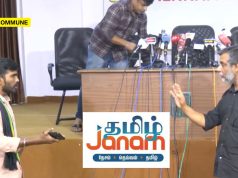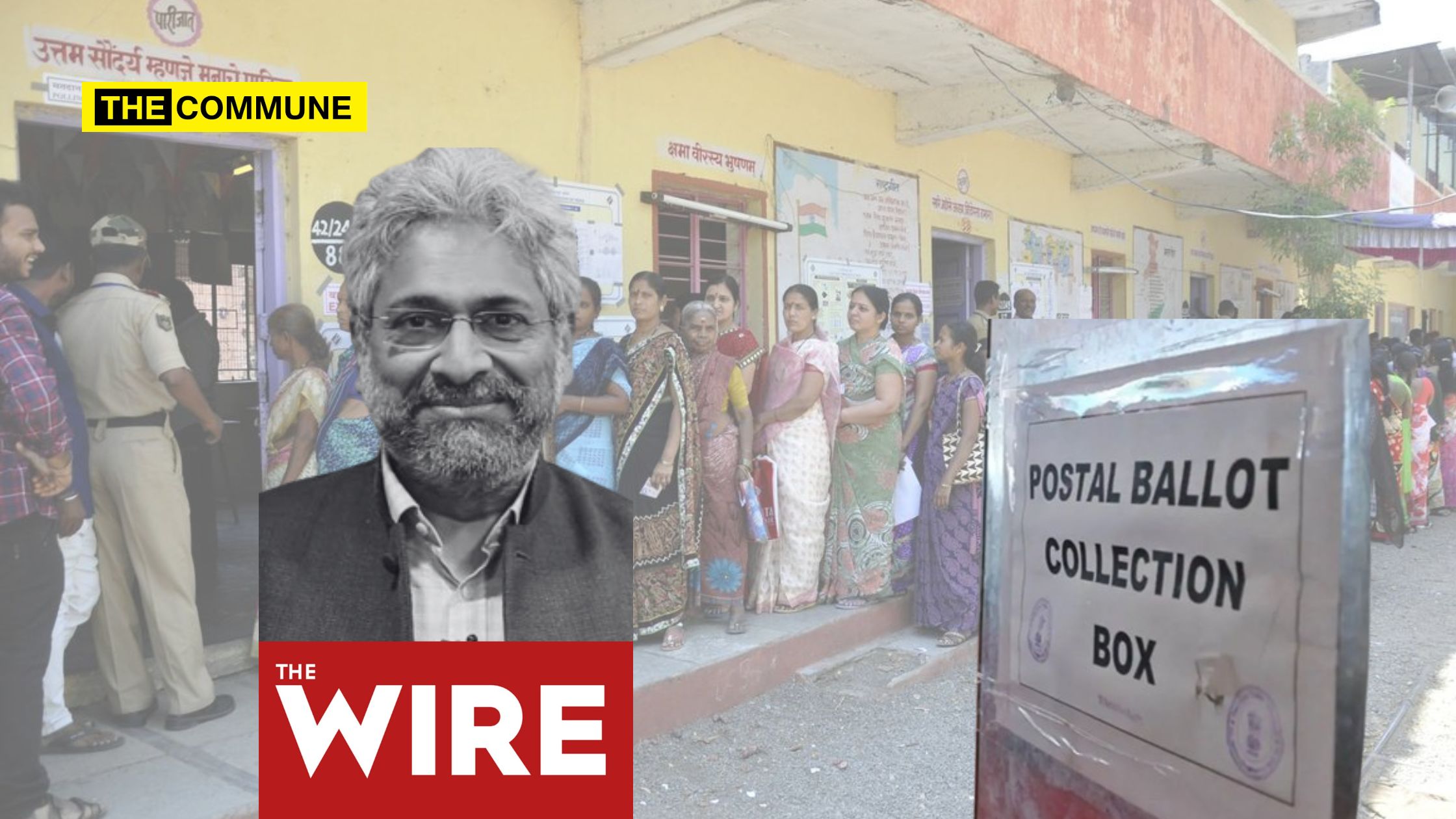
A report by The Wire alleging discrepancies in the Maharashtra 2024 Assembly election results was swiftly debunked by the Election Commission (EC). The Wire article, which claimed over 5 lakh unaccounted votes, led to accusations of electoral manipulation favouring the ruling BJP. Despite the EC clarification that the discrepancy in votes was due to the exclusion of postal ballots, the story that was published on 25 November 2024 gained traction, amplified by opposition leaders and left-leaning media.
The ECI quickly dismissed these unfounded allegations as baseless but the attempt by The Wire has spread like wildfire and has been picked up by similar-minded leftist media to fan the flames even further across the country.
The Wire Allegations On Unaccounted Votes
In its article, The Wire pointed to an apparent inconsistency in the numbers released by the Election Commission. The report claimed that the total number of votes cast during the election was 6,40,88,195, while the final tally on the day of results stood at 6,45,92,508. This led to the assertion that an excess of 5,04,313 votes had been “counted,” but not “polled.”
To bolster its claims, the report highlighted alleged mismatches in 280 constituencies, where it stated that the votes counted exceeded those cast. Conversely, in eight constituencies, the article alleged that fewer votes were counted than polled. Specific examples, such as the constituencies of Ashti and Osmanabad, were cited to illustrate these purported irregularities.
The implications of these claims were serious. The article suggested that the discrepancies could indicate tampering or manipulation in favor of the ruling party, especially since the BJP emerged victorious in a highly contested election.
The Election Commission’s Swift Response
The Election Commission of India acted promptly to refute The Wire’s claims, issuing a detailed clarification that dismantled the allegations. At the core of the rebuttal was the assertion that The Wire had failed to account for postal ballots in its calculations.
५,०४,३१३ अतिरिक्त मते असल्याच्या तसेच आष्टी (२३१) आणि उस्मानाबाद (२४२) या दोन विधानसभा मतदारसंघांमध्ये मतांच्या संख्येत तफावत असल्याच्या The Wire या वृ्त्तपत्रात आलेल्या वृत्ताबाबत@SpokespersonECI @ECISVEEP @MahaDGIPR pic.twitter.com/qe1bkXjuUz
— ChiefElectoralOffice (@CEO_Maharashtra) November 26, 2024
According to the ECI, the numbers published by The Wire only included votes recorded in Electronic Voting Machines (EVMs) and omitted the 53,822 valid postal ballots cast during the elections. When these postal ballots were included, the so-called discrepancy of 5,04,313 votes disappeared entirely.
The Commission also clarified that its voter turnout app and official reports distinctly separate data for votes cast through EVMs and postal ballots. This separation, it argued, might have led to the misinterpretation of the data by The Wire.
In addition to the postal ballot issue, the ECI addressed the procedural nuances of vote counting. It explained that some votes were rendered invalid due to technical problems, such as mock poll data errors or EVM malfunctions. These invalid votes were duly accounted for per the Commission’s guidelines, which dictate that such votes are not re-verified if the margin of victory exceeds the number of invalid ballots.
To address specific allegations, the Chief Electoral Officer of Maharashtra provided constituency-level data for areas like Ashti and Osmanabad.
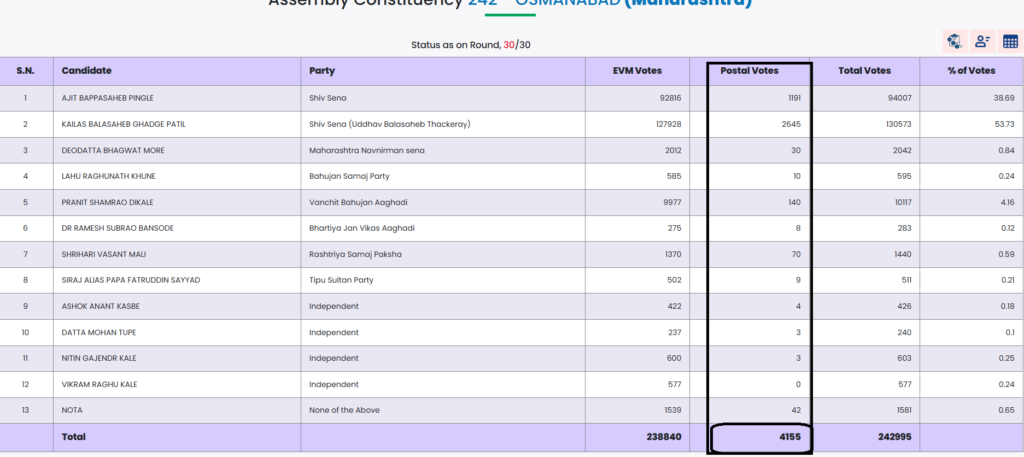
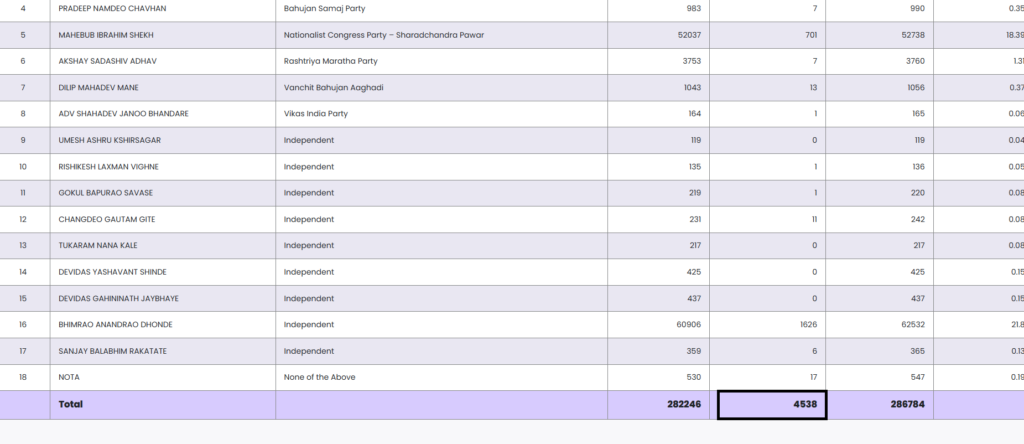
This data demonstrated how clerical errors or an incomplete understanding of the counting process could lead to apparent mismatches.
Leftist Media’s Role In Fanning The Flames
The controversy gained momentum as opposition leaders and left-leaning media figures amplified The Wire’s claims without verifying their accuracy. Prominent politicians like Nana Patole of the Congress Party and Jitendra Awhad of Shiv Sena (UBT) used the report to question the BJP’s victory, calling for greater scrutiny of the electoral process. Down south, Malayalam news agencies also carried the same fake news peddled by The Wire.
The Wire is just a fake news factory, much like Malayalam Channels such as Asianet and Marunadan. They don’t do journalism, they thrive on manufactured propaganda. The Malayalam media has eagerly swallowed and celebrated The Wire’s false stories on EVM count mismatch in… pic.twitter.com/8FlMo3gPrt
— K Surendran (@surendranbjp) November 27, 2024
YouTube channels of alleged journalists like that of Abhisar Sharma who was embroiled in the NewsClick scandal also lapped up the fake news and generated millions of views for his channel. In this clipping, he says, “A difference of 5 lakh votes has emerged in the Maharashtra elections, why is no comment being made on this? What is this whole matter, friends? I am going to explain to you through statistics on your screen, according to the Election Commission of India, the final voting percentage was 66.5% which represents a total of 64, 088, 195 votes. Out of these, women’s votes are 30,649, 318; male votes are 33,437,057 votes. That is, if it is said in simple words friends, the total votes cast were 64, 088,195 votes and do you know how many votes were counted through EVM? The total vote count, on your screen, is 64, 592, 508 and you know the difference between the number of votes cast and the number of votes counted, the difference is 5,04313. Look at this figure, the difference is 504313 votes. This question will definitely be asked, where did the extra votes come from? Why is the Election Commission not answering these questions? The leaders of the Maha Vikas Aghadi are not believing in this mandate at all.”
Fake news started by Wire now viral across ecosystem
Wire removed postal ballots and asked if there is mismatch of ~5 lakh votes
Wire got caught and deleted its tweet
But this video by Abhisar Sharma repeating this rumor has almost 1 million views!
How to stop this now? pic.twitter.com/VBhrJsZNUZ
— Abhishek (@AbhishBanerj) November 28, 2024
This isn’t the first time The Wire has courted controversy with its reporting. In 2019, the portal alleged a discrepancy of 1.9 crore votes during the Lok Sabha elections, a claim that the Election Commission similarly debunked. More recently, The Wire faced backlash over its fabricated stories about Meta and the BJP IT Cell, culminating in public apologies and retractions.
These repeated instances of misinformation have raised concerns about The Wire’s credibility and that of the broader media ecosystem. Critics argue that such reporting undermines trust in democratic institutions and fuels unnecessary polarization.
While The Wire has not deleted the article from its website, it has silently added a corrigendum of sorts but not issued a public retraction or apology.
This change in stance has not been taken up by the leftist news media across the country. Meanwhile, the damage caused by the article—shared widely on social media and cited by opposition leaders—remains.
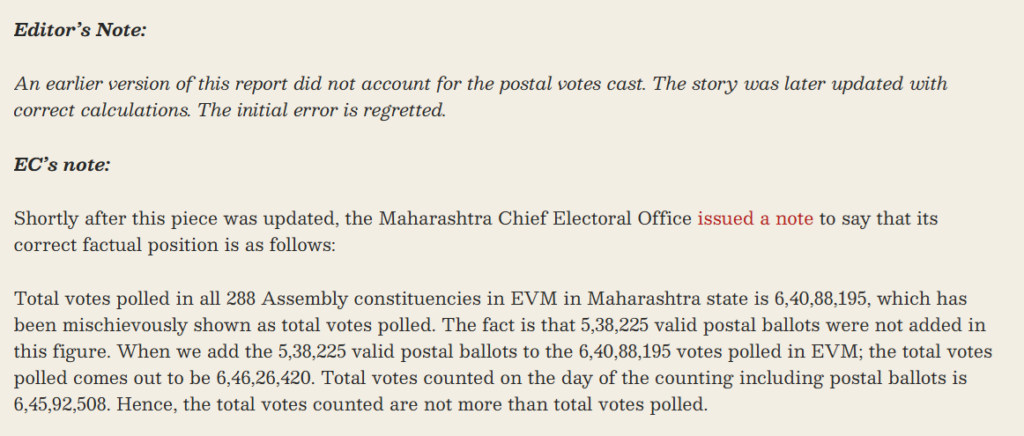
Additionally, S Varadarajan, who fuelled the lies, silently deleted the post from his X handle.
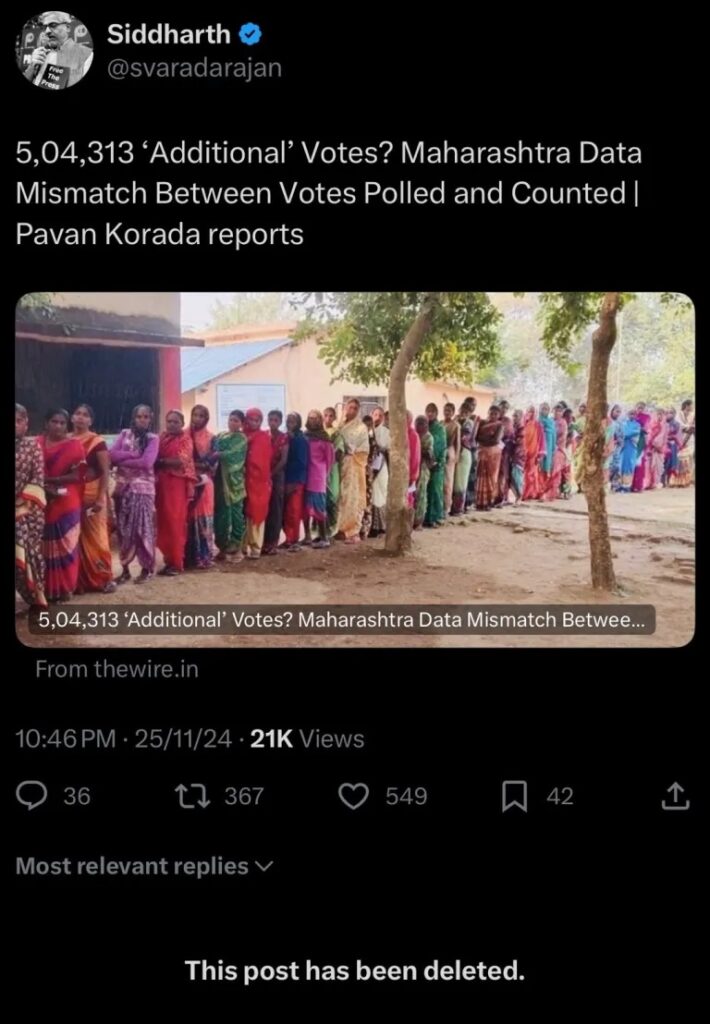
The real danger lies not just in The Wire’s initial fabrication but in the cascading effect of misinformation. Despite the Election Commission’s clear rebuttal, the story had already spread across multiple platforms. Opposition leaders continued to amplify the narrative, and social media channels had already disseminated the false claims widely. The Wire’s actions are not journalism – they are a calculated assault on democratic transparency, ably funded by divisive forces.
Subscribe to our channels on Telegram, WhatsApp, and Instagram and get the best stories of the day delivered to you personally.

